Talk with our local travel specialist who can help organize your trip.
Top 10 Common Mistakes to Avoid while trekking in Nepal
Trekking in Nepal is adventurous, fulfilling, and nothing like you've experienced anywhere. Due to the diverse geography, lush nature, and remote Himalayan trials, the journey on foot will be enjoyable and demanding.
Whether it is a short trekking or long mountain trekking in Nepal, there are many things to be considered before taking your next flight to Nepal. Having little to no knowledge about the trekking region you are traveling to can lead to many mistakes. The topography of the Himalayas is unforgiving, so one needs to properly prepare for trekking in Nepal.
Make your trek in Nepal a memorable and successful one by learning about the common mistakes made by trekkers and how to avoid them. While there is a lot to learn from these mistakes, whether your own or someone else's, it can be expensive and, at times be fatal. Hence, it is best to do in-depth research about Nepal trekking to avoid making silly mistakes.
Given below are the top 10 common mistakes to avoid while trekking in Nepal:
Table of Content
- 1. Not Taking Enough Training Or Taking Wrong Training
- 2. Walking Quickly At A High Altitude
- 3. Shortening The Trek
- 4. Trekking To The Himalayas Without A Guide
- 5. Overpacking Or Under Packing
- 6. Careless Consumption Of Food
- 7. Drinking Water From An Unknown Source
- 8. Not Drinking Enough Water
- 9. Not Applying Sunscreen
- 10 Trekking In Normal Shoes
- Conclusion
1. Not Taking Enough Training Or Taking Wrong Training
In terms of difficulty, trekking in Nepal can range from easy to moderate and challenging. The winding topography, altitude, and weather contribute to the difficulty of a trek. Many trekkers do not consider the difficulty grade level and board on a trek that is physically arduous to complete. It is advised to properly assess the level of effort involved in the trek and then prepare yourself accordingly.
It is best to have some prior hiking or short trekking experience for a lengthy high-altitude trek. If you don't live near a hiking or trekking trail, then consider cardio training, running, swimming, and cycling, which will strengthen your muscles. Remember that only lifting weights in a gym will not suffice as you need to walk 4 to 8 hours per day on a rocky trail.
2. Walking Quickly At A High Altitude

A common mistake among many young trekkers in groups is their perception that trekking is an act of athletic challenge. In that sense, they wish to reach the destination quickly and become the victim of altitude sickness at higher altitudes.
The oxygen that the body and brain get at higher altitudes is compromised, so you will not have as much energy or oxygen to spare. It is also one reason why trekkers experience the symptoms of altitude sickness such as vomiting, dizziness, fainting, and more. In the worst-case scenario, altitude sickness can even cause fatality. Moreover, the high-altitude trails are mostly slopey, narrow, and rocky, making them difficult to walk.
Appreciate the wilderness, the natural beauty, and the serene silence. Remember, the mountains are not running anywhere, so nor should you! Hence, it is best not to take big leaps or run from one destination to the next.
3. Shortening The Trek
Acclimatization or a rest day is essential in a long high-altitude trek to make your body acquainted with the altitude change and recharge yourself. Another common mistake closely associated with walking quickly at high altitudes is shortening the trek. We often get queries from rookie trekkers who wish to complete a trek in a short period, which was otherwise lengthy. Most have a limited budget or time to travel to Nepal. Many of us even go as far as to minimize the total trekking days by walking quicker than average and skipping the acclimatization days.
Trekking in the Himalayas and hills of Nepal is meant to bring us closer to nature, put us at peace, and instill new experiences. If you have limited time, you can reach out to us to plan a shorter trek best suited to the budget and situation. However, don't try to rush the once-in-a-lifetime experience.
Featured Trips
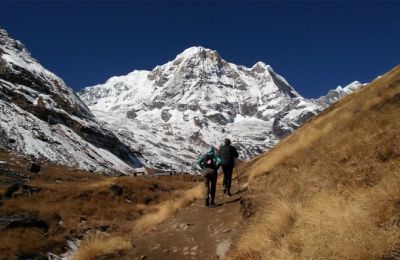
Annapurna Base Camp Trek - 11 days
Annapurna Base Camp Trek - 11 days takes you close to the world's 10th highest mountain, Annapurna I, Gurung culture, rhododendron forest, and terraced fields.
Inquire Now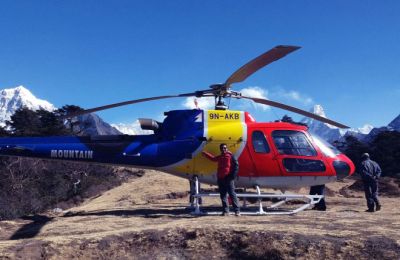
Everest Base Camp Luxury Trek with Helicopter Flight - 11 days
Take an extraordinary journey and explore majestic Mount Everest with a once-in-a-lifetime Everest Base Camp Trek. Enjoy the sights of local Sherpa culture along the way before soaring back down to Kathmandu in a helicopter return.
Inquire NowWhere to travel next?
Get help from our travel specialists for holiday ideas that matches your interests.
4. Trekking To The Himalayas Without A Guide

By now, we already know that trekking in Nepal is not as easy as it seems and that you have to consider a lot of things. Is it mandatory to trek in Nepal with a guide? No. Do we recommend trekking with a guide? Absolutely!
Except for a couple of restricted regions in Nepal like Upper Mustang and Dolpo, you don't need to hire a guide to tag along with you during your treks in Nepal. However, it is highly suggested to hire one because they are a great source of knowledge and safety. If it is your very first time trekking in Nepal, you might get confused around the tricky trails and even the unique local language.
Guides can help you navigate the trails easily, interact with the locals, offer insights on the history and culture, help during testing times, and enhance the entire experience. Especially if you are trekking to the high altitudes, your guide with years of trekking experience will undoubtedly assist you in the unfortunate case of altitude sickness.
You can contact local trekking agencies to hire a well-experienced guide who speaks your native language or English.
5. Overpacking Or Under Packing

We understand that overpacking is something most travelers cannot help overcoming. Old habits die hard. Throw in a couple of trousers, and before you know it, you will have emptied your cupboard into your backpack.
Heavy trekking bags prove to be a bigger hassle than expected while you are trekking in the terrains of Nepal. Imagine carrying a heavy bag uphill, trying to take pictures while catching your breath in high altitudes!
While we are on the topic of packing, we also want to make it clear to our readers that underpacking is equally a poor decision. Missing out on a thick layer of clothing in the freezing temperatures of the Himalayas can cause frostbites and prove fatal.
It is better to be resourceful, but you need to do ample research about the trekking destination's climate, remoteness, and altitude before making your packing decisions. There can be only a few things that you can pack for trekking in Nepal. After arrival in Nepal, consult with your guide, then hire some essential outer clothing and gear from a rental shop. Moreover, to make the trek easier, you can hire a porter to carry about 25 kgs of your bag, which could be an alternative.
6. Careless Consumption Of Food
This one is fairly common among rookie trekkers. Trekking is a high-energy intensive activity that consumes double the calories on an average day. Hence food is what keeps you going. But taking the wrong food can cause unwanted digestive issues.
We might be tempted to consume junk food like noodles, chips, and cookies, which might easily lead to constipation or diarrhea.
Don't be tempted to try something that doesn't sit well with you, and make sure you ask the ingredients in the meal so that you don't catch food allergies. Also, it is best to avoid consuming meat at higher altitudes because, in remote areas, there isn't proper storage, it could be days old, and high-fat meals take longer to digest. Eating local produce and veggies is perhaps the best option.
It is best to stick to three meals a day, including a heavy breakfast in the morning, local lunch in the afternoon, and a light dinner. Additionally, you can add filler snacks like energy bars and chocolates while walking.
7. Drinking Water From An Unknown Source
Drinking water is generally available in open streams or tap water in Nepal. Drinking straight out of a stream could mean carrying germs that cause cholera, diarrhea and stomach ache. Many tourists believe in living like a local while traveling, which might be true in most cases but not in food and water consumption.
Most houses in remote areas don't have filtered water, so they might generously offer you the water that they consider is healthy. However, your body might not be acquainted with drinking such water.
In saying that, not every region in Nepal has shops that sell mineral water. In most high-altitude areas, the cost of a liter of mineral water can cost three times more than the average cost. Hence, it is best to carry a reusable water bottle with an inbuilt water filter to fill the tap water or free streams and drink without worries.
Featured Trips
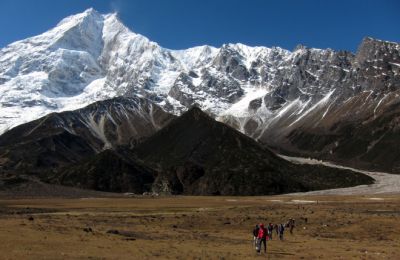
Manaslu Trek via Barpak and Laprak - 17 days
Manaslu Trek - 17 days is an off-beat trekking adventure with a fascinating cultural experience. Walk to the base of Manaslu, the eighth highest peak in the world.
Inquire Now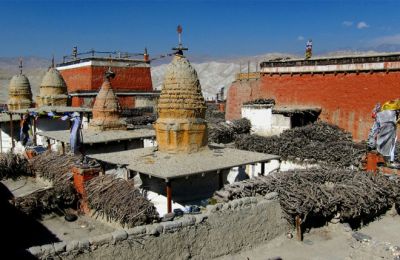
Upper Mustang Trek - 15 days
Upper Mustang Trek is a relatively new trek in Nepal as the region was opened to foreigners since 1992. Upper Mustang is culturally and geographically more similar to Tibet.
Inquire NowWhere to travel next?
Get help from our travel specialists for holiday ideas that matches your interests.
8. Not Drinking Enough Water

It is wise to avoid drinking water from unknown sources; that doesn't mean you stop drinking after all. Keeping yourself hydrated is very essential during treks.
In the drift of excitement, many trekkers forget to keep themselves hydrated and go about trekking for many hours without a single drop of water. Some trekkers feel that drinking sugary drinks and coffee constitutes water intake which is a misconception.
Trekking requires a lot of energy and water via sweating, so your body can easily become dehydrated. It makes us walk even slower and causes constipation as well. The symptoms of dehydration are headache, dizziness, weakness, and confusion.
Remember to drink water after each hour, even if it poses a distraction. The ideal water intake for a day is about 3 to 4 liters.
9. Not Applying Sunscreen
We have heard of men warding away sunscreen as a cosmetic. But sunscreen is more of a necessity to protect your skin against diseases rather than a beauty product. There are many regretful stories of how trekkers forget to carry sunscreen or underestimate the damage it causes to not carry one.
Trekking requires you to walk hours and hours under the scorching sun leading to sunburns that are not pretty to look at. The sun is intense at higher altitudes due to the thin atmosphere and the reflection from the snow, so you will most certainly feel the heat seeping through your skin.
Use a sunscreen that suits your skin type and protects against UVA, UVB, and UVC rays. If you are trekking to a high altitude where there is a possibility of snow, cover up any exposed areas like hands, ears, neck, and face with sunscreen. Additionally, you can use brimmed hats and caps to protect your skin.
10 Trekking In Normal Shoes
The landscape of Nepal is not normal but rather rugged. There are frequent uphill climbs on rocky, uneven roads. Normal sports shoes that could be used for running or jogging simply don't cut them. We have seen many trekkers who confidently wear all types of shoes but experience discomfort and excruciating pain after a long journey.
For short and easy treks, specialized boots might not be required, but trekking boots are the best option for longer treks in rugged trails. Trekking shoes are different because they have ankle support and grooves with good grip and soft soles. Shop for the best fit, not too loose nor tight. A high-quality trekking shoe can last many treks and make these treks all the more comfortable.
Another thing to note is that many trekkers often feel the hot spots appearing on their heels due to excessive walking but often ignore it. The humble blister can eventually become an excruciating pain if you do not treat it quickly. Make sure to carry ointments to spot the hot spots from developing.
People also commonly overlook cutting their toenails. Make sure to cut your nails as well. When long toenails hit the wall of your tight boot, they will get squashed and cause bleeding.
Conclusion
Trekking in Nepal is the most adventurous activity, which requires a clear understanding of the country before travel. With adequate research on the best month for trekking in Nepal, packing checklists, and common mistakes to avoid, you can enjoy Nepal to the fullest. Make sure to reach out to our experienced guides and representatives to plan and book tours in any of the best trekking places in Nepal.
- Written by: Naba Raj Amgai
Updated: Jan, 13, 2022

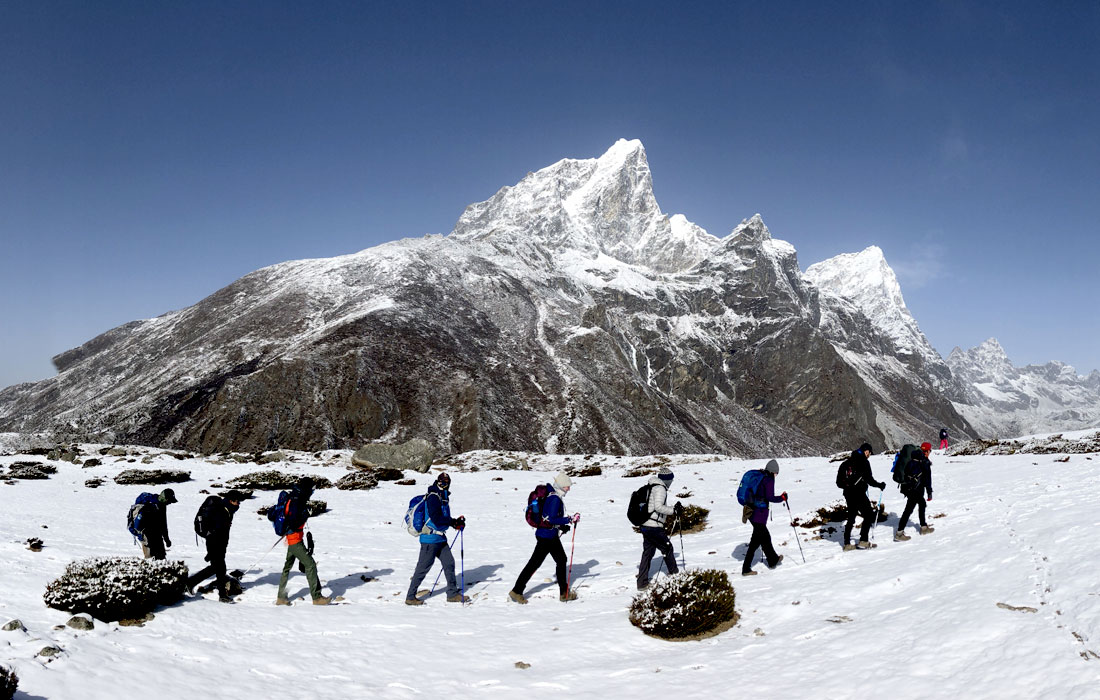

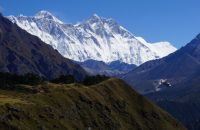
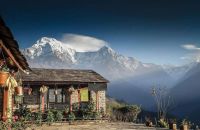
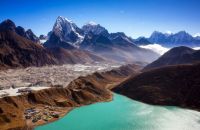
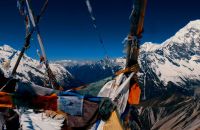
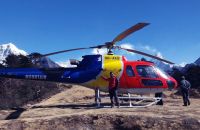
















Recent Comments
trekking faster at higher altitudes is the deadliest mistake. My friend had to stop at the Dingboche for two days, descending immediately because he was walking faster than usual and got caught with a severe headache. The acclimatization day helps a lot. make sure to entail at least one acclimatization day.